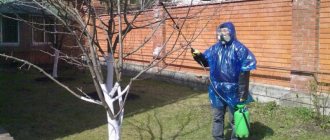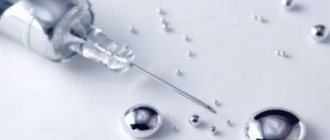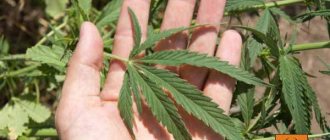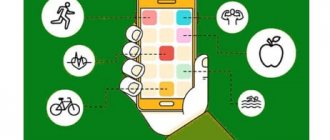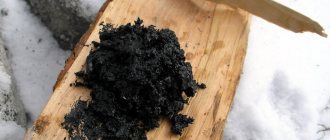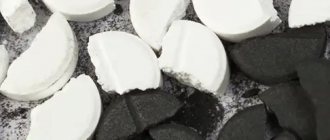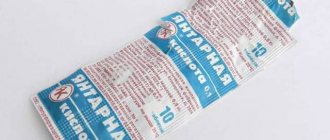Copper becomes the main component for the coordinated functioning of the human immune system and endocrine glands. It plays an important role in metabolism and is part of enzymes for the production of blood cells (leukocytes, erythrocytes). Without metal, it is impossible to produce modern household appliances, computer equipment, and kitchen utensils.
The main consumers of copper are the transport industry, textiles, aviation, engineering and heavy industries. Copper has also been used in the pharmaceutical industry; it is necessary for the manufacture of preparations for the treatment of burns, antifungal ointments, creams, and sorbents.
In everyday life, people use copper as part of copper sulfate; they use it to treat fruit trees, shrubs, and flowers against pests. The solution does not have a strong odor, but it has a characteristic bitter-tart taste; the liquid has antiseptic, astringent and disinfectant properties.
Is copper sulfate harmful to humans? It is dangerous when the instructions for use of a substance and safety precautions are violated; there is a threat to life when a person accidentally or intentionally swallows a copper solution.
How can you get poisoned with copper sulfate?
Copper sulfate is a fairly common substance used in many areas of industry, agriculture and even for household needs. The likelihood of poisoning with this compound should be correlated with the possible use and degree of contact of the copper sulfate derivative and the human body:
- Metallurgy . Copper sulfate is used for galvanization processes, as well as nickel plating;
- Chemical industry . The substance is fundamental for obtaining a huge range of finished raw materials and complex chemical compounds. Most often it can be found in mineral paints, as one of the simple components;
- Animal husbandry . Copper sulfate is still used as a component of animal feed;
- Food industry . The substance is registered as preservative E519;
- Gardening and Agriculture . Used as a mineral additive to the soil, to treat tree bark against pests;
- Construction sector . Copper sulfate is good at eliminating rust stains, mold, and traces of leaks. The wood treated with it acquires fire-resistant properties and rots very slowly;
- Medicine . The substance is a powerful antiseptic with astringent and cauterizing properties; it can be used as a base agent for gastric lavage in cases of acute white phosphorus poisoning (a light 0.1 percent solution is used).
Prevention during frequent use of the product
In production workshops, copper sulfate poisoning is avoided by observing safety standards and regulations. After work, you need to take a shower and change clothes. At home, the substance must be stored in a closed container, away from children, in a well-ventilated room without food.
When working, use gloves, goggles, a respirator, and follow safety rules. After work, carry out wet cleaning, change clothes, and perform water procedures. Drinking plenty of fluids is recommended. If you feel unwell, consult your doctor.
Inorganic copper sulfate is in demand and popular due to its low price and less danger to the environment than the latest developments of pesticides from organic components. However, in order to avoid health problems, you must adhere to personal safety rules.
Copper sulfate or copper sulfate is a special blue pentahydrate that has a crystallized form. It is used in almost all spheres of human activity, namely: agriculture, medicine, crop production, paint and varnish industry, as well as construction. This is due to its universal and effective properties: astringent, antiseptic, disinfectant.
The harm of copper sulfate and its effect on the human body
The potential danger of vitriol depends significantly on its concentration, physical form (liquid, crystals, etc.), as well as the method of penetration into the body.
Despite the fact that the substance is classified as hazard class 4 (low level), if used incorrectly, it can cause some harm to the body. Direct contact with intact skin usually has no significant effect - copper sulfate is not very penetrating and is therefore harmless in this context.
The substance is more dangerous through the inhalation route of penetration - thus, there are known cases of intoxication due to violation of safety precautions (lack of a good respirator) when processing metal surfaces, galvanizing, grinding and other activities where dust and vapors containing a high concentration of copper compounds are formed in large quantities , including vitriol.
The most dangerous route for human health is the oral route of penetration of copper sulfate into the body. We are talking about both direct use of the substance in the form of a solution or solid crystals, and indirect (through low-quality dishes, poorly washed crop products, previously treated with vitriol, and so on).
The main effect in the body at excess concentrations is burns of the mucous membranes of a chemical nature, denaturation of protein structures, the launch of a number of oxidative processes, damage to the circulatory system (with the destruction of red blood cells), kidneys, liver, and central nervous system.
Primary signs of poisoning can appear with a single oral consumption of more than 500 milligrams of the substance (in pure form), or 11 milligrams (in absolute equivalent) per kilogram of body weight when inhaling copper sulfate particles. A potentially life-threatening dose varies widely - from 8 to 50 grams at a time, depending on the individual characteristics of the organism, the predominant type of compound, the presence of side factors and other circumstances.
Intoxication
To ensure proper functioning of the body, the daily dosage of copper is about three milligrams. Its reserves can be replenished independently if you eat products that are rich in such microelements, namely:
- oats;
- buckwheat grain;
- potato;
- spinach;
- some offal - liver and kidneys.
In such cases, poisoning is impossible.
Copper sulfate poisoning can occur in the following situations:
- Inhalation method - a person inhales dust in the process of violating safety precautions associated with grinding and processing a metal surface that contains copper;
- With food, when cooking utensils that may contain this toxic substance are used;
- Infection through the skin. If the patient has large and severe burns, then a special compress containing a solution of copper salt can be used.
Such poisoning causes enormous harm and damage to health and life.
Symptoms of copper sulfate poisoning
Symptoms of vitriol poisoning can be both acute and chronic.
Manifestations of chronic intoxication:
- Complex disorders of the liver, kidneys and gastrointestinal tract;
- Pathologies of the central nervous system with the development of neurological symptoms and mental disorders;
- Changes in the color of the skin, hair, mucous membranes and sclera of the eyes - they acquire a greenish tint;
- Partial destruction of teeth, hair loss, pathological transformations of the nasal septum, redness of the gums.
Acute manifestations with predominantly respiratory penetration of the substance:
- Inflammation of the eyes, throat, sneezing, severe cough, excessive lacrimation;
- Severe headache, sweating, general weakness of the body in general and muscle structures in particular;
- Increase in body temperature to 39-40 degrees;
- Systemic allergic reactions;
- Breathing disorders;
- Short-term loss of consciousness. In severe cases - coma and convulsions.
Acute symptoms of oral penetration of copper sulfate into the body:
- Acute dyspeptic disorders - nausea, pain and burning in the abdomen, flatulence, vomiting with blood (sometimes of a pale blue hue), brown diarrhea;
- Increased salivation, strong metallic or sweet taste in the mouth;
- Cardiovascular manifestations . Usually this is tachycardia, increased blood pressure;
- Neurological manifestations in severe intoxication range from loss of consciousness and disorientation in space to convulsions, disappearance of reflexes and coma.
Treatment at home
Treatment at home is possible only for mild copper sulfate poisoning and consists of drinking plenty of fluids, fresh air, and following the therapist’s recommendations. If complications arise that cause disruption of the internal organs, a specialist will treat these manifestations. Therapy should be carried out exclusively in a medical facility under the supervision of a doctor.
First aid
First aid is relevant for acute forms of poisoning with copper derivatives. Key actions include:
- Transporting the victim to a safe place. It is rational to carry out in case of poisoning by vapors and dust of a substance. After gaining access to fresh air, you should rinse your mouth, clean your nose, skin, and eyes using running water;
- Gastric lavage . For these purposes, a weak solution of potassium permanganate (0.1 percent) can be used - you should drink up to 1.5 liters of the product, and then induce artificial vomiting. The use of fatty or acidic liquids is prohibited;
- Sorbents and other actions . After washing, it is rational to use any available sorbents (Polysorb, Enterosgel, activated carbon) in the volumes recommended for food poisoning (indicated in the instructions for the drugs). If medical assistance is delayed, it is also worth continuing to give the victim plenty of fluids (plain water), as well as starting therapy with diuretics and saline laxatives (based on sodium or magnesium sulfate) - this will help quickly remove toxins from the body.
There is no specific antidote to copper sulfate. For acute forms of poisoning, universal Unithiol is used (intramuscular). After the medical team arrives at the scene of the incident and transports the victim to the intensive care unit, the person is prescribed standard procedures for providing conservative comprehensive medical care - parenteral administration of solutions based on sodium bicarbonate, intravenous injections of aminazine, painkillers, other symptomatic and supportive medications, forced diuresis and hemodialysis.
Precautionary measures
Copper sulfate and compounds based on it have been used by gardeners and gardeners for decades. It is difficult to do without the drug, since the product is convenient and effective to use, economical, and affordable.
- Use special containers (not made of metal) to prepare solutions.
- Maintain the dosage of the product according to the instructions.
- When diluting solutions and processing, wear special clothing, gloves, goggles, a respirator or mask.
- To better dissolve the powder, use warm (not hot) water.
- Prepare formulations immediately before use. Do not store solutions; discard any remaining solution. When water in solutions cools, the substance crystallizes and such compositions are not suitable for use.
- When storing the substance, keep it away from food, indoors in places inaccessible to small children and animals. Store in plastic or glass containers.
- Treat plantings in the evening or in the morning. It is advisable to choose a windless day and not spray immediately after rain.
- After work, be sure to clean and rinse sprayers and containers for solutions.
- Do not work with the compounds when gardens are flowering, otherwise the plants will get burned.
- After treatments, take a shower, wash overalls, and rinse personal protective equipment.
Consequences and complications
Despite the fact that copper sulfate is classified as a substance of a low hazard class, when the substance enters the body (especially its high concentrations), not only classic signs of poisoning can develop, but also various complications, including long-term ones.
Potential consequences include:
- Persistent neurological and mental pathologies. Formed with complex lesions of the central nervous system. May manifest as convulsions, epileptic seizures, parkinsonism, development of delirium, depression, psychosis, irreversible changes in a person’s psycho-emotional reactions;
- Anemia , predominantly of the hemolytic spectrum;
- Systemic damage to the kidneys and liver with the formation of nephrosis, cirrhosis, rapid development of necrotic processes and partial or complete failure of organs (renal and liver failure in the decompensation stage);
- Allergic and autoimmune reactions;
- Bronchopulmonary diseases;
- Cardiovascular disorders;
- Pathological changes in the structure of the skin, hair, nails, teeth, mucous membranes;
- Fatal outcome due to prolonged failure to provide qualified medical care;
- Other diseases, pathologies, syndromes and negative conditions.
